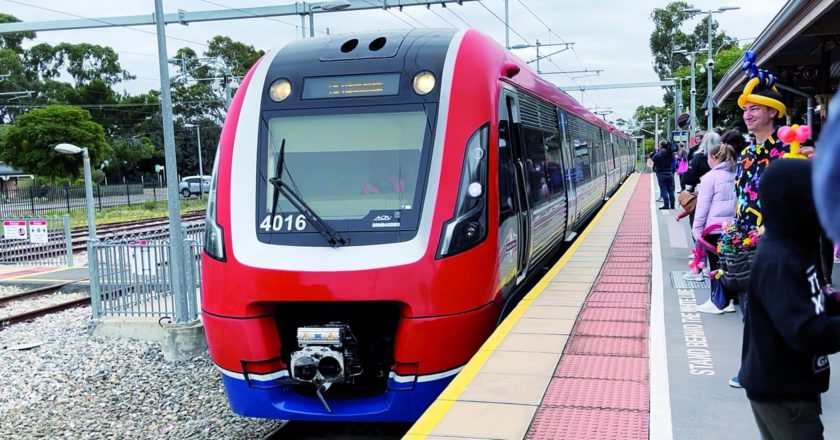1. Introduction
The increasing competition due to the pandemic is changing the world’s structure and the revenue and profitability of the industries and businesses irrespective of their diversity. In the construction industry, the practices and construction works have become complex in nature and it has been realised that the construction operations have been intricately related to the revenue and profit (Belle, 2017). On the other hand, with the increasing demand for quality and excellence, the construction industry has been looking for more advanced technology and processes for construction work. The concept of change in revenue and change in profit are related to each other and it is observed that if the organizational revenue is decreasing therefore the profit of the company is also being affected.
This is the reason that the large construction organization are so much worried about increasing their revenue which would be affecting their profit in future at the same time (Bosch, 2018). Several factors are working behind the decreasing revenue and loss incurred by the construction industry organization, and it is observed that these factors severely influence the future functionalities of the construction works simultaneously. Therefore, the report would be delivering a detailed discussion where the secondary raw data was analyzed with the help of SPSS and the findings would be interesting on the relationship between revenue and profit in the large construction industries (Bril et al. 2018). With the help of regression analysis, the relationship will be justified and proper answers to the research questions will also be delivered.

1.2 Problem statement
The problem statement related to the topic can be delivered by the factors that adversely affect the large construction organization and their projects. As the construction organization have become heavily reliant on the machinery and electrical equipment it has significantly reduced the intervention of the human workforce in the project (Delgado et al. 2019). On the other hand, due to the continuous functionalities of the machinery and the lack of proper maintenance, equipment errors have become one major factor that contributes to the decreasing quality of construction projects and delays in delivery time. The more the project would take time, the more it would encounter a loss in profitability which eventually influenced the profitability of the organization.
1.3 Research aim and objectives
The research aims and objectives related to the topics are stated in the following manner.
1.3.1 Aims:
The aim of this report is to manifest the relationship between revenue and profit in large construction organizations.
1.3.2 Objectives:
- To understand the reasons behind less revenue generation in large construction companies.
- To explain the sources of influence between the revenue and profit and their relationship as well.
- To detect the factors that encourage the correlation between profit and revenue in large construction companies.
1.4 Research questions
- What are the factors working behind the decreasing revenue in large construction companies?
- How the ratio of profits is influenced by the decreasing revenue in construction?
- What are the sources of influence between the revenue and profit of large construction companies?
- How the balance between the profit and revenue be maintained in large construction companies?
1.5 Rationale
The rationale for this research work is identified with the ability to understand the impact of revenue generation on organizational profit. On the other hand, the study would be manifesting a clear idea regarding how the revenue in large construction companies could influence the growth or decrease of the profit rate (Dunant et al. 2018).
2. Literature review
Eriksson (2017), has realized that revenue is the reflection of what the organization is investing and creating sales out of it. On the other hand, the concept of profit refers to the amount of money that an organization incurs after the expenses are done. In the construction industry, large organizations are commonly attracted to heavy equipment and machinery which requires a huge capital expense (Lines et al. 2017). On the other hand, the construction industry has been considered a hyper-competitive industry where each and every organization needs to have excellence in their project development process and also to adhere to the strategic process of planning a project for sustainable profitability.
In many cases of the large construction organizations, it has been realized that the company has an intense need to accumulate equipment and machinery but in less capital investment which eventually leads the organization to have lo 2020). The increasing competition in the construction industry due to the customer demand and more complete designs presented in the contemporary societal structure has also created complexities and barriers to generating more revenues than before. Poulfelt et al. (2017), delivered the fact that if an organization would not be able to accumulate revenue as per the requirement that the profitability will automatically be influenced and reduced.

Poulfelt et al. (2017)., has highlighted that in the context of a construction project the profit margin required to be determined at the initial phase of the project is completely dependent on the estimated budget and assumptions. In the due process project development difference between equations changes with time and demand of the end-users and this often results in cost and schedule extension of the project. These aspects are evident in influencing the profit margin and the quality of the project while it also contributes to decreasing the revenue due to the late delivery and low quality of the project.
Noghabaei et al. (2020), asserted that the profit margin estimation and the assumptions regarding revenue by the construction projects in large construction companies often lead the organizations to bankruptcy. Moreover, The practices of price estimation and erosion sometimes contribute to the discrepancy of revenue generation in the industry and that eventually results in less profit generation (Smith, 2021).
Depending on the above discussion it is a realization that Vaux and Kirk, (2018), justify the relationship between revenue and profit in the construction industry and explain how the profitability and profit margins are getting affected by the concept of revenue generation as construction companies are making wrong decisions that affect them adversely (Wong et al. 2017). Therefore, the research work would be conducting a thorough analysis of the different organization and their revenue generation trends and how the revenue and profit are related to each other and what affects the decrease in profit if the revenue of the same organization is decreasing as well.
3. Methodology
The methodology is another important section of a research work that needs to be clear, concise and comprehensive. In the methodology, the research would be conducting a thorough analysis of raw secondary data collected from lower secondary sources. In this context, the secondary sources will be manifesting data regarding the Australian construction companies where the revenue and profit are considered (Zatta & Kolisch, 2014). Here, the descriptive research design and the exploratory research approach will be utilized.
Along with this, the comparative analysis between the Australian construction companies and the UK construction companies to understand how the revenue growth has impacted the profitability of these two regions and what are the factors that are working behind the same. Therefore, the deliverable of the respective researcher’s work is identified in terms of independent variables and dependent variables (Belle, 2017). All the collected data will be analyzed using SPSS and regression analysis that would provide the proper answer to the research questions.
Dependent variable: profitability
Independent variable: revenue, changed revenue, changed profit, changed profit percentages
4. Findings and analysis
In the course of data collection and analysis, the 10 companies in the construction industry have been chosen for data collection. The data have been gathered from the construction companies based on their current revenue, profit rate and changed profit percentages. Therefore, the below case summary is evident in delivering clear insight regarding the revenue and profit co-relation (Bril et al. 2018). The below figure is evident in manifesting the data related to the revenue accumulation of different construction companies in the UK and Australia and a comparative analysis could also be delivered in this regard.
| Case Summaries | |||||||||
| Revenue | Profit | profit per cent changes | CHANGED REVENUE | CHANGED PROFIT | |||||
| UK construction companies | .00 | Australian construction companies | AU | 1 | $90,615.00 | $2,340.30 | -4.00 | $78,958.00 | $1,874.00 |
| 2 | $89,647.00 | $3,251.40 | 55.00 | $97,865.00 | $4,251.80 | ||||
| 3 | $75,344.00 | $1,386.80 | 65.00 | $95,874.00 | $1,657.80 | ||||
| 4 | $42,951.00 | -$1,359.00 | .00 | $35,879.00 | -$1,305.00 | ||||
| 5 | $41,076.00 | $1,429.20 | .00 | $36,897.00 | $1,429.20 | ||||
| 6 | $37,215.00 | $108.50 | -78.50 | $29,854.00 | $98.70 | ||||
| Total | N | 6 | 6 | 6 | 6 | 6 | |||
| Total | N | 6 | 6 | 6 | 6 | 6 | |||
| UK | Australian construction companies | .00 | 1 | $8,405.00 | $138.00 | 12.20 | $7,802.00 | $123.00 | |
| 2 | $3,071.00 | $88.60 | 9.90 | $2,972.00 | $80.60 | ||||
| 3 | $2,589.70 | $44.20 | 15.70 | $2,237.60 | $27.40 | ||||
| 4 | $1,634.40 | $34.60 | 2.10 | $1,601.00 | $34.40 | ||||
| Total | N | 4 | 4 | 4 | 4 | 4 | |||
| Total | N | 4 | 4 | 4 | 4 | 4 | |||
| Total | N | 10 | 10 | 10 | 10 | 10 | |||
| a. Limited to first 100 cases. |
In accordance with the above case summary, it is observed that the data connection has been done from a total of 10 construction organizations in the UK and Australia and among these instruction organizations, the revenue and profit have been compared to understand how the revenue changes can impact the changes in profit. In relation to the Australian construction companies, it is observed that 50% of the construction organization have experienced a rise in their profit as the revenue has increased from what it was in 2019 (Davidson, 2012).
On the other hand, The Other 50% of the Australian construction companies have observed that their profit rate has not increased and that they remained at the same place due to the lack of revenue generation. In the case of the UK construction organization, there are four organizations involved in the data collection process and it is realized that all the four organizations had evidently experienced an increase in their profit percentage as the revenue has increased since 2019 and 2020. Therefore, from the overall summary of the data collection, it is quite evident that increase in revenue generation or changes in the numbers of revenue that a construction organization is earning definitely impacts the changes in profit rates.
| Descriptive Statistics | |||||
| N | Minimum | Maximum | Mean | Std. Deviation | |
| Revenue | 10 | $1,634.40 | $90,615.00 | $39,254.8100 | $35,779.28539 |
| CHANGED PROFIT | 10 | -$1,305.00 | $4,251.80 | $827.1900 | $1,537.47578 |
| CHANGED REVENUE | 10 | $1,601.00 | $97,865.00 | $38,993.9600 | $38,608.69981 |
| Profit | 10 | -$1,359.00 | $3,251.40 | $746.2600 | $1,347.18188 |
| profit percent changes | 10 | -78.50 | 65.00 | 7.7400 | 38.48077 |
| Valid N (listwise) | 10 |
In relation to the above figure descriptive statistics, it is realized that it is the data evaluation of the Australian construction organization where the data regarding revenue, profits, change revenue, and change profits have been read along with the profit change percentages.
Frequency Table
| Statistics | ||||||
| Revenue | Profit | CHANGED REVENUE | CHANGED PROFIT | profit per cent changes | ||
| N | Valid | 10 | 10 | 10 | 10 | 10 |
| Missing | 0 | 0 | 0 | 0 | 0 |
This table has manifested that all the variables are valid.
| Revenue | |||||
| Frequency | Percent | Valid Percent | Cumulative Percent | ||
| Valid | $1,634.40 | 1 | 10.0 | 10.0 | 10.0 |
| $2,589.70 | 1 | 10.0 | 10.0 | 20.0 | |
| $3,071.00 | 1 | 10.0 | 10.0 | 30.0 | |
| $8,405.00 | 1 | 10.0 | 10.0 | 40.0 | |
| $37,215.00 | 1 | 10.0 | 10.0 | 50.0 | |
| $41,076.00 | 1 | 10.0 | 10.0 | 60.0 | |
| $42,951.00 | 1 | 10.0 | 10.0 | 70.0 | |
| $75,344.00 | 1 | 10.0 | 10.0 | 80.0 | |
| $89,647.00 | 1 | 10.0 | 10.0 | 90.0 | |
| $90,615.00 | 1 | 10.0 | 10.0 | 100.0 | |
| Total | 10 | 100.0 | 100.0 |
The revenue table has manifested the previous revenue of the construction organization and the current revenue which has drastically changed. The total valid percentage of the change is 100% and it is evident that revenue change could be an influential change in the profit ratio.
| profit per cent changes | |||||
| Frequency | Per cent | Valid Percent | Cumulative Percent | ||
| Valid | -78.50 | 1 | 10.0 | 10.0 | 10.0 |
| -4.00 | 1 | 10.0 | 10.0 | 20.0 | |
| .00 | 2 | 20.0 | 20.0 | 40.0 | |
| 2.10 | 1 | 10.0 | 10.0 | 50.0 | |
| 9.90 | 1 | 10.0 | 10.0 | 60.0 | |
| 12.20 | 1 | 10.0 | 10.0 | 70.0 | |
| 15.70 | 1 | 10.0 | 10.0 | 80.0 | |
| 55.00 | 1 | 10.0 | 10.0 | 90.0 | |
| 65.00 | 1 | 10.0 | 10.0 | 100.0 | |
| Total | 10 | 100.0 | 100.0 |
The changed profits have been evident in clearly manifesting the concept of changed percentage and it is realized that some of the organization in the UK construction industry has been evident in creating a change in their revenue which eventually increased the profit rate.
| Descriptive Statistics | |||||
| N | Minimum | Maximum | Mean | Std. Deviation | |
| Revenue | 10 | $1,634.40 | $90,615.00 | $39,254.8100 | $35,779.28539 |
| CHANGED PROFIT | 10 | -$1,305.00 | $4,251.80 | $827.1900 | $1,537.47578 |
| CHANGED REVENUE | 10 | $1,601.00 | $97,865.00 | $38,993.9600 | $38,608.69981 |
| Profit | 10 | -$1,359.00 | $3,251.40 | $746.2600 | $1,347.18188 |
| profit percent changes | 10 | -78.50 | 65.00 | 7.7400 | 38.48077 |
| Valid N (listwise) | 10 |
This particular table has delivered an overall description of the UK construction companies and their practices with revenue and profit. It is realized that all the selected companies have experienced growth in profit alongside the increase in the revenue of the company as well.
Discussion:
In the context of delivering the findings of the analysis conducted, it could be stated that the revenue and profits are intermittently related to each other. Here, the data collection of different secondary sources has manifested that the organizational revenue and its growth could cause evident growth in the profit rate of the company. The revenue growth is subjected to several factors in the UK and in Australia as well. The comparative analysis of both the regions and their construction industry has manifested how the different factors are continuously delivering the influence the revenue generation and profit growth (Wong et al. 2017).
As per the analysis of data, it is realised, that 50% of the Australian construction organisations have encountered the same profit rate as experienced previously while the other person has manifested growth in the revenue which directly influences their profit rate at the same time. For instance, has collected revenue of $37215in 2019, while the profit rate of the same was $108.5. With the same company, it is realised that In 2020, the company has encountered a revenue which was $29854 and the profit rate of the same organisation was $98.7 (Bril et al. 2018). This data has provided the insight that the organisation has encountered a decrease in its profit rate with -78.5 % in 2020 due to the lack of increase in its revenue. There are various factors working behind such a situation for example the covid-19 virus precautions and regulations have been imposed on construction projects due to the construction sites not being able to function as usual.
On the other hand, the findings are also manifested that 6 of the Australian construction companies were selected to collect data and most of them have manifested the balance between revenue and profit which eventually prove the fact that changes in revenue can cause changes in the profit rate of the organization. Another example of the company can be delivered where the data of M&G has manifested that the organization collected a revenue of $8405 in 2019, And the profit rate of the organization was $138 (Bril et al. 2018). Later the same Organization was recorded with revenue $7802 and a profit rate of $123. The change in profit percentage was recorded at 12.20% which is quite evident that the changes in the revenue amount can cause changes in the profit amount as well.
In relation to conducting a comparative analysis between the UK construction organization and the Australian construction organization, it is important to highlight that both the regions have their respective work procedures and regulations that have created challenges for both the industries (Williams and Rajaguru, 2013). In the UK, the construction organizations have also been considered under strict barriers due to the covid-19 and the crisis that caused restrictions to the construction projects. These aspects have compelled the organizations to opt for heavy machines that would be utilized for the construction work instead of engaging human workforces (Noghabaei et al 2020).
On the other hand, the Australian construction organizations have also manifested a severe downfall in their revenue generation that had caused due to several factors for example Lack of skilled labour force and for quality of the materials. This is one of the main factors why the revenue is decreasing as the Australian construction organizations have been offering cheap quality due to the lack of proper resources and capital investment from the government (Lines et al. 2017). This has caused the downfall in the economic standard due to the continuous lockdown and other factors of restrictions and social distancing that were to be maintained.
Therefore, it is evident that the findings have successfully directed towards the fact that is causing a downfall in the revenue generation by the large construction industry in both the regions and also manifested the factors that are resulting in such outcomes. Apart from this, the analyses have also manifested the reasons behind the revenue to be impacted in the large construction organization which eventually delivers a strong impact on the profit rate of each organization (Liozu and Hinterhuber, 2015). The data analysis has depicted how the construction organization are facing a change in profit percentage in 2019 and 2020 and these can be considered as clear proof that a change in revenue amount can cause a change in the profitability of the construction organization as well.
5. Conclusion
In conclusion, it is important to state that the report has focused on analysing the impacts of revenue over the profit generation rate and it also intended to discuss how the changes in the revenue amount can influence the changes in profit amount of the large construction industries. a detailed background regarding the topic has been provided where the problem related to the construction organisations have been discussed and those problems involve involving heavy machinery is instead of human what forces, system failure due to lack of maintenance, crisis and the restrictions in social distancing, limitation in adding workers in the construction projects and so on are clearly affecting the productivity of the construction organization and eventually influencing the revenue as well.
The secondary data has been chosen where 10 organizations from the UK and Australian construction industries are considered and the data of those companies involving revenue and profit has been analyzed in this regard. This analysis has provided the findings that have determined the fact that revenue changes can influence changes in profit and that the data analysis has clearly exhibited the reasons behind the changes in revenue and their influence on profitability.
Recommendation:
- Organizations need to concentrate on applying technology and collaborating with the human workforce.
- The organizations are required to provide plan improvement and apply initial assumptions.
- Increasing employee training and development.
- The safety and training policies needed to be updated (Moutousi and May 2018).
- Generate more evident and clear communication.
References
Belle, I., 2017. The architecture, engineering and construction industry and blockchain technology. Digital Culture, 2017, pp.279-284.
Bosch, G., 2018. 4. The Changing Nature of Collective Bargaining in Germany: Coordinated Decentralization. In The New Structure of Labor Relations (pp. 84-118). Cornell University Press.
Bril, A., Kalinina, O. and Levina, A., 2018. Two-stage commercial evaluation of engineering systems production projects for high-rise buildings. In E3S Web of Conferences (Vol. 33, p. 03004). EDP Sciences.
Davidson, D., 2012. Analysing responses to climate change through the lens of reflexivity. The British Journal of Sociology, 63(4), pp.616-640.
Delgado, J.M.D., Oyedele, L., Ajayi, A., Akanbi, L., Akinade, O., Bilal, M. and Owolabi, H., 2019. Robotics and automated systems in construction: Understanding industry-specific challenges for adoption. Journal of Building Engineering, 26, p.100868.
Dunant, C.F., Drewniok, M.P., Sansom, M., Corbey, S., Cullen, J.M. and Allwood, J.M., 2018. Options to make steel reuse profitable: An analysis of cost and risk distribution across the UK construction value chain. Journal of Cleaner Production, 183, pp.102-111.
Eriksson, P.E., 2017. Procurement strategies for enhancing exploration and exploitation in construction projects. Journal of Financial Management of Property and Construction.
Lines, B.C. and Reddy Vardireddy, P.K., 2017. Drivers of organizational change within the AEC industry: Linking change management practices with successful change adoption. Journal of management in engineering, 33(6), p.04017031.
Liozu, S. and Hinterhuber, A., 2015. Measuring the profit impact of pricing & revenue management. Journal of Revenue and Pricing Management, 14(3), pp.137-139.
Moutousi, O. and May, D., 2018. How Change-related Unethical Leadership Triggers Follower Resistance to Change: A Theoretical Account and Conceptual Model. Journal of Change Management, 18(2), pp.142-161.
Nguyen, P.T. and Nguyen, P.C., 2020. Risk Management in Engineering and Construction. Engineering, Technology & Applied Science Research, 10(1), pp.5237-5241.
Noghabaei, M., Heydarian, A., Balali, V. and Han, K., 2020. Trend analysis on adoption of virtual and augmented reality in the architecture, engineering, and construction industry. Data, 5(1), p.26.
Poulfelt, F., Olson, T.H., Bhambri, A. and Greiner, L., 2017. The changing global consulting industry. In Management consulting today and tomorrow (pp. 5-36). Routledge.
Smith, T. 2021. Normative decomposition of the profit bridge into the impact of changes in marketing variables. Journal Of Revenue And Pricing Management. https://doi.org/10.1057/s41272-020-00278-8
Vaux, J.S. and Kirk, W.M., 2018. Relationship conflict in construction management: Performance and productivity problem. Journal of Construction Engineering and Management, 144(6), p.04018032.
Williams, B. and Rajaguru, G., 2013. Change in Bank Revenue; Change in Bank Risk? What Has Happened in Asia?. SSRN Electronic Journal,.
Wong, P.S., Zwar, C. and Gharaie, E., 2017. Examining the drivers and states of organizational change for greater use of prefabrication in construction projects. Journal of Construction Engineering and Management, 143(7), p.04017020.
Zatta, D., & Kolisch, R. 2014. Profit impact of revenue management in the process industry. Journal Of Revenue And Pricing Management, 13(6), 483-507. https://doi.org/10.1057/rpm.2014.14



1 thought on “Analysing How The Change In Revenue Is Related To The Change In Profits In The Large Construction And Engineering Companies”